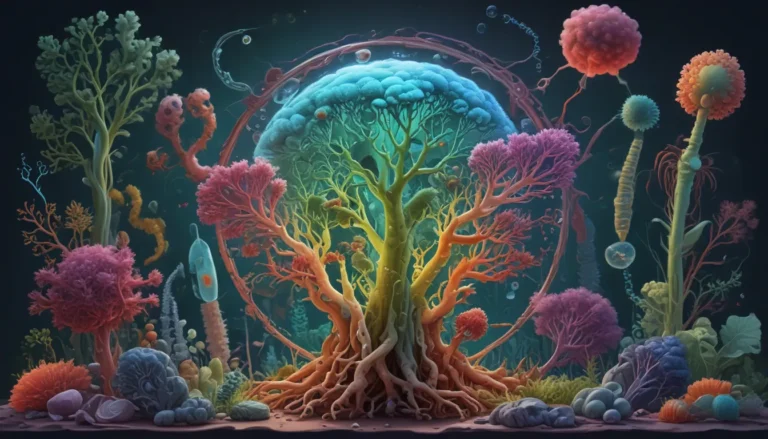A Note About Images: The images used in our articles are for illustration purposes only and may not exactly match the content. They are meant to engage readers, but the text should be relied upon for accurate information.
In the intricate dance of nature, resource partitioning emerges as a captivating aspect of ecological interactions. This phenomenon allows species to coexist harmoniously in the same habitat, avoiding direct competition for resources. Delve into the world of resource partitioning with these 11 fascinating facts that shed light on its role in maintaining biodiversity and enhancing ecosystem health.
Understanding the Essence of Resource Partitioning
Resource partitioning serves as a sharing system in nature, where different organisms carve out their own spaces and times to access essential resources without engaging in conflict. By doing so, they ensure their survival and contribute to the diversity and vitality of the environment. As humans, we can aid in resource partitioning by cultivating various crops and preserving habitats. By grasping how species share resources, we can uphold the richness of our world’s flora and fauna.
The Art of Reducing Competition
At its core, resource partitioning functions to minimize competition among species vying for limited resources. When different organisms utilize resources in different ways, they can peacefully inhabit the same environment without impinging on each other’s existence.
The Key Role of Ecological Niches
Central to the concept of resource partitioning is the ecological niche, encompassing all the environmental factors necessary for a species’ survival, growth, and reproduction. By specializing in distinct aspects of their shared habitat, species with similar niches can coexist through resource partitioning.
Exploring Different Types of Partitioning
Resource partitioning manifests in two main forms: spatial and temporal. Spatial partitioning involves species utilizing different areas or aspects of the environment, while temporal partitioning entails utilizing the same resource at different times.
Evolutionary Adaptations and Resource Partitioning
Evolutionary processes often drive resource partitioning, with species evolving to exploit distinct resources or utilize the same resource in varying ways. This evolutionary strategy reduces direct competition and fosters coexistence.
Real-Life Examples of Resource Partitioning
An illustrative example of resource partitioning can be observed in the feeding behaviors of certain bird species. While some feed on insects in the canopy, others forage on the forest floor, effectively dividing the available food resources.
Fostering Biodiversity Through Resource Partitioning
By mitigating competition, resource partitioning enables a greater diversity of species to thrive in an ecosystem, bolstering biodiversity and stabilizing ecosystem dynamics.
Impact on Ecosystem Services
Resource partitioning exerts a positive influence on ecosystem services by supporting a myriad of species that contribute to vital functions such as nutrient cycling, pollination, and ecosystem maintenance.
Navigating Environmental Changes
Changes in environmental conditions can disrupt established patterns of resource partitioning, leading to heightened competition and potential repercussions on species diversity.
Embracing Broad and Narrow Niches
Species with broad niches are more inclined to engage in resource partitioning compared to those with narrow niches, as they possess the flexibility to adapt and utilize varied resources within their habitat.
Addressing Competition Dynamics
Resource partitioning primarily addresses interspecific competition (between different species) rather than intraspecific competition (within the same species). Both forms of competition influence the niche partitioning process.
Safeguarding Against Competitive Exclusion
The principle of competitive exclusion posits that no two species can occupy the same niche in the same environment indefinitely. Resource partitioning naturally prevents competitive exclusion by fostering species adaptation to occupy distinct niches.
Delving Deeper into Resource Partitioning
Resource partitioning epitomizes the intricate and resilient nature of ecosystems, showcasing how species evolve and interact to coexist harmoniously. Through the lens of resource partitioning, we unveil the mechanisms that underpin biodiversity, essential for the longevity and vitality of our planet’s ecosystems.
Frequently Asked Questions
-
What is resource partitioning?
Resource partitioning entails the differentiation of species to minimize competition and optimize the utilization of limited resources based on factors like space, time, or morphology. -
Why is resource partitioning important?
Resource partitioning is vital for promoting biodiversity and enhancing ecosystem stability by reducing competition among species sharing the same habitat. -
What are the mechanisms of resource partitioning?
Mechanisms of resource partitioning include spatial differentiation, temporal differentiation, and morphological differentiation, enabling species to coexist and thrive. -
How does resource partitioning contribute to ecological balance?
Resource partitioning maintains ecological balance by facilitating coexistence among species, fostering stability and resilience in ecosystems. -
How is resource partitioning relevant to conservation?
Understanding resource partitioning aids conservation efforts by informing strategies to protect habitats that support resource partitioning and uphold species diversity.
Dive into the vibrant tapestry of nature’s delicate balance through resource partitioning, where organisms intricately navigate and coexist in shared spaces. Discover how biodiversity flourishes as species harness unique strategies to access limited resources, offering profound insights into ecology’s fundamental principles. Explore more about competitive exclusion, the sheer diversity of life on Earth, and the underpinnings of ecological interactions as we unravel the wonders of nature’s harmony.
This reimagined version focuses on the educational aspects of resource partitioning, providing readers with detailed insights and practical knowledge on how species coexist in shared habitats. It emphasizes the importance of biodiversity and ecosystem health while maintaining a friendly and informative tone throughout.






